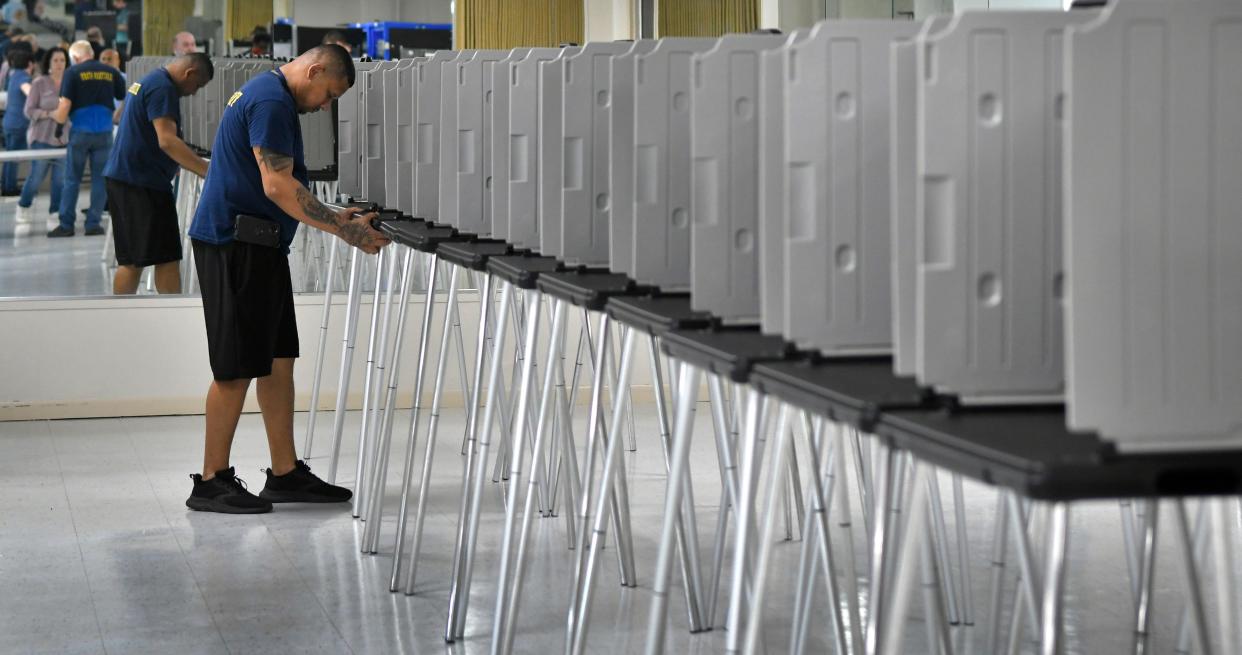Ponte Vedra author: ‘Death of discernment’ helps election misinformation, lies to spread

As the election cycle picks up speed and campaigns are measured more by rhetoric than their platforms, another alarming trend has surfaced: Voter apathy about the rampant misinformation and disinformation that threaten a fair and honest election.
Never in my lifetime have I seen such a tsunami of deception — accidental or intentional. Despite books, articles and news stories about the hijacking of truth, voters seem to shrug their shoulders as if to say, “What can you do?” Or they parrot back a verbal attack on a candidate whose platform they know little about, but who is someone they’ve been told they should hate.
I call it the death of discernment.
As a broadcast and print journalist for half my adult life and a news junkie for as long as I could read, I’ve lived through and reported dozens of events that required discernment. Civil rights marches, assassinations, strikes, recessions, wars, the AIDS and opioid epidemics, 9/11 and mass shootings, among others.
Repeatedly in our history, we’ve been called upon to think deeply about what’s happening to us individually and corporately and to consider the consequences. To ask questions, push back, dig deeper and understand what’s behind all the noise, because the stakes are so high.
Today, however, discernment fatigue appears to have the upper hand.
In this election season, we dare not be misinformed or “sit this one out” just because we hate everybody who’s running or we do not know who to trust.
If your child faced a life-threatening condition and different doctors gave you conflicting advice for the best treatment, you would find the time to learn all you could about the treatment options and the consequences. This is similar. Our democracy is sick, and a lot of people are telling us what is needed.
This is not the time for us to let other people tell us what to think, without doing our homework and making sure those people spouting advice know what they are talking about.
A good place to start is to recognize misinformation and disinformation and how they work.
According to the American Psychological Association’s 2024 Trend Report, misinformation is false or inaccurate information — getting the facts wrong. It can spread due to misunderstanding or lack of knowledge, but it’s dangerous, nonetheless. It can stick around for years, even after facts are set straight, because it gets shared and commented on and “liked” on social media.
Social media’s algorithms set up a peer-to-peer echo chamber effect that then amplifies false claims faster than traditional “legacy” media (primary news sources like mainstream newspapers with rigorous fact-checking teams and other guard rails) can correct them.
If the misinformation gets repeated often enough, people start thinking it must be true, even though repetition doesn’t make something true when it never was.
Disinformation is deliberately false information, created to deceive or manipulate public opinion and obscure the truth. It is an even more dangerous problem because, according to a Pew Research study, 86% of Americans access news on their digital devices. Reputable news sources with fact-checked reporting from trustworthy sources are sharing internet bandwidth with advertising and advertorials posing as news.
These are “planted” stories and those pretending to be reputable news. Such disinformation doesn’t announce itself as a faulty facsimile of the truth. It purports to be the whole truth and nothing but the truth.
It's imperative to recognize the difference. It's not hard and we can learn; we just have to want to do so.
Mark Woods: Childhood literacy programs are about more than childhood literacy
It means reading more than one source of news and checking the trustworthiness of those sources. It means taking advantage of online aids like the Global Disinformation Index and FactCheck.org. AARP also has an online article called “Ten Ways to Spot Fake Videos and Falsehoods on the Internet.”
Plus, the Institute for Public Relations has created a 10-point checklist to help stop the spread of disinformation and a wealth of additional resources is available online.
Letters: Who knew our parents had it wrong when teaching us to vote for best candidate?
If you receive information online or in the mail from an organization with a very patriotic name, go online and search for who is funding the organization. What is their agenda? Are they nonpartisan? If they’re not, are their facts reliable? Can they be independently verified by other sources?
Pay attention to the words candidates say. Do they evoke fear or possibility? Do they present solutions or simply stoke outrage? Do they have a track record of addressing real needs or are they simply adept at clever sound bites? What about their character? Character matters, because these are the people who will be making decisions that affect your future. Do you trust them?
It's not too late, but there’s work to do. If we let the loudest voices, the meanest words, the candidates with the biggest bankroll or the PACs with the most clout tell us what to think, we have only ourselves to blame for what happens next.

Verla Wallace of Ponte Vedra is a retired print and broadcast journalist who worked for CBS and NBC affiliates and the Chicago Tribune. Her freelance work has appeared in several national magazines and she is the author of “Revolt of a Well-Intentioned Life: The Backroads Adventure that Changed Everything.” Learn more at PilgrimontheLoose.com.
This guest column is the opinion of the author and does not necessarily represent the views of the Times-Union. We welcome a diversity of opinions.
This article originally appeared on Florida Times-Union: Voters in Florida, U.S. must not take election rhetoric at face value

